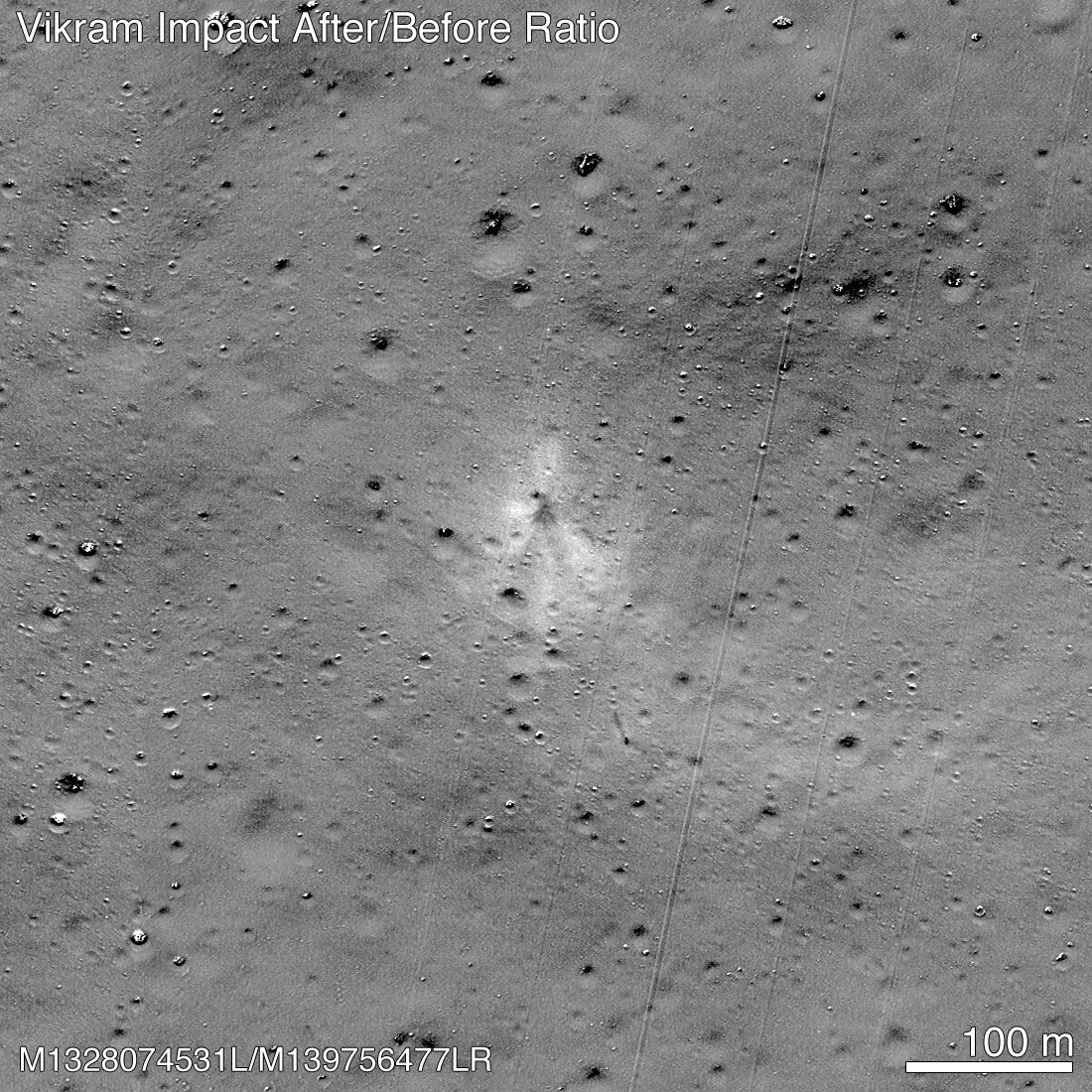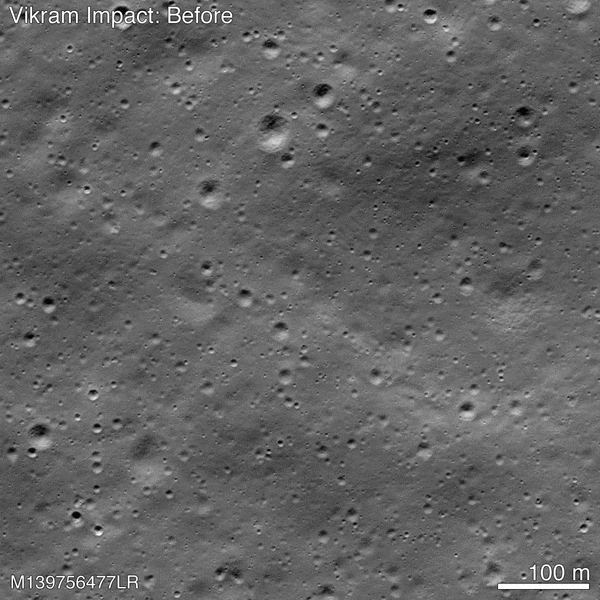Create a free profile to get unlimited access to exclusive videos, sweepstakes, and more!
Debris from India's crashed lunar lander found on the Moon's surface

India has an ambitious space program; they had a successful Mars orbiter and two missions to the Moon. Their second lunar mission, Chandrayaan-2, was only partly successful: While the orbiter has been mapping the Moon and continues to perform well, the Vikram lander (also equipped with a rover) suffered a malfunction in early September while descending to the surface. It veered off-course while still a couple of kilometers up, and contact was lost seconds before touchdown. It was presumed to have crashed.
There is now direct evidence of this: NASA's Lunar Reconnaissance Orbiter (LRO) took images of the site, and after receiving a tip from an Indian space enthusiast who found some evidence of debris in the images, the LRO Camera team positively identified the impact site and debris from the spacecraft.
The animation shows the change between two images taken before and after the crash. The difference is a bit subtle, but the "after" image shows a lighter pattern of lunar regolith (the powdery surface material), which tends to look lighter when disturbed. The pattern hints at an impact from the lander moving down. That becomes even more obvious when the before and after images are divided, giving a brightness ratio that highlights changes:
There's some material splashed above the impact site, but most produces a fan pattern below it. That's typical for a relatively slow-moving impactor moving not just down but also across the surface. Soil disturbances were seen well over 2 kilometers downrange of the impact site as well.
It's not clear exactly what went wrong to cause the lander to crash. The Indian Department of Space minister of state said that the braking thrusters didn't perform correctly, with the lander decelerating too much, and the software wasn't designed to deal with that. It crashed about 500 meters from its designated landing site. I strongly suspect engineers will be examining the LRO data carefully, since the direction and velocity of the impact may give them clues as to what went wrong.
Despite this setback the Indian Space Research Organization continues to plan for more missions, including Chandrayaan-3, a follow-up to 2 that also has a lander and rover. I'll note that their Mars Orbiter Mission was their first attempt to go to and orbit the Red Planet, and they made it in one go, the first country ever to achieve that (Mars is notoriously difficult to send probes to, and both the USSR and USA had many failed attempts before success). The loss of this lunar lander was a blow, but it's early days yet for them. I expect they'll learn their lesson, implement fixes, and continue to explore space.
When I see images like the ones above, too, I wonder… when will humans finally visit them, and from what country will they be? I'm not above a little national pride when it comes to such things, but I also wonder how much it will matter by then, too.




























